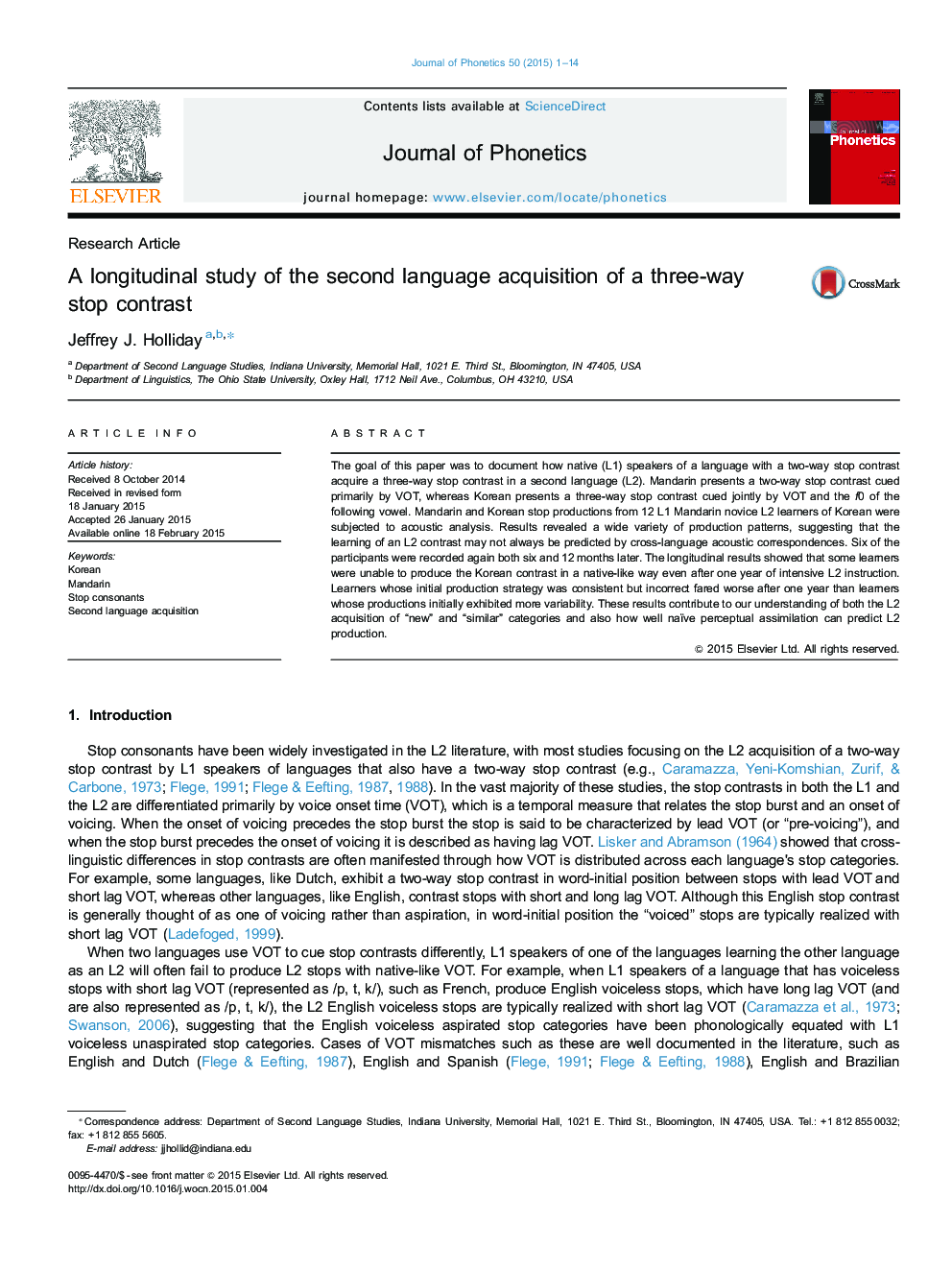| Article ID | Journal | Published Year | Pages | File Type |
|---|---|---|---|---|
| 1100679 | Journal of Phonetics | 2015 | 14 Pages |
•L1 Mandarin learners of Korean produce Korean stops with a variety strategies.•Speaking a tone language may not help in learning the f0 cue to a stop contrast.•Naïve perceptual assimilation may not predict novice L2 production very well.•Allophonic variation and orthography may help explain some L2 production patterns.
The goal of this paper was to document how native (L1) speakers of a language with a two-way stop contrast acquire a three-way stop contrast in a second language (L2). Mandarin presents a two-way stop contrast cued primarily by VOT, whereas Korean presents a three-way stop contrast cued jointly by VOT and the f0 of the following vowel. Mandarin and Korean stop productions from 12 L1 Mandarin novice L2 learners of Korean were subjected to acoustic analysis. Results revealed a wide variety of production patterns, suggesting that the learning of an L2 contrast may not always be predicted by cross-language acoustic correspondences. Six of the participants were recorded again both six and 12 months later. The longitudinal results showed that some learners were unable to produce the Korean contrast in a native-like way even after one year of intensive L2 instruction. Learners whose initial production strategy was consistent but incorrect fared worse after one year than learners whose productions initially exhibited more variability. These results contribute to our understanding of both the L2 acquisition of “new” and “similar” categories and also how well naïve perceptual assimilation can predict L2 production.
